
Up the Milky Way


|
Up the Milky Way |

|
You can see the Milky Way on any clear summer night, but up in the north woods, on especially clear nights, the Milky Way glows like a neon light, from north horizon to south horizon, brilliantly reflected in the lake by our camp. Most people recognize the Milky Way as a band of light across the night sky, but what is that band of light - where does it come from?
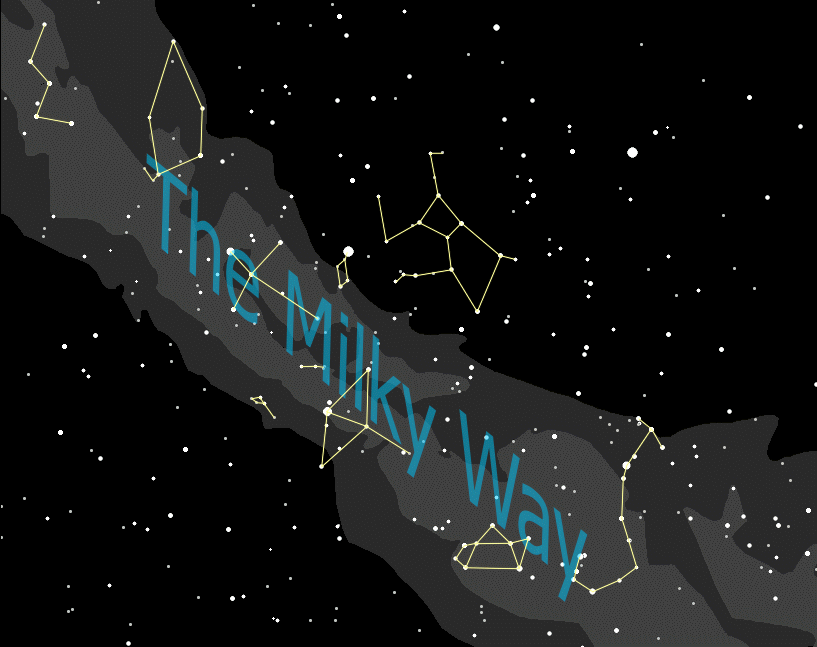

You'll see a similar phenomenon later when you look at the M13 globular cluster in Hercules. Through binoculars you will see it as a hazy patch. When you see it through a telescope - that is, closer up - you can pick out individual stars. The better the telescope, the 'closer' you can get to M13, the more stars you can see.
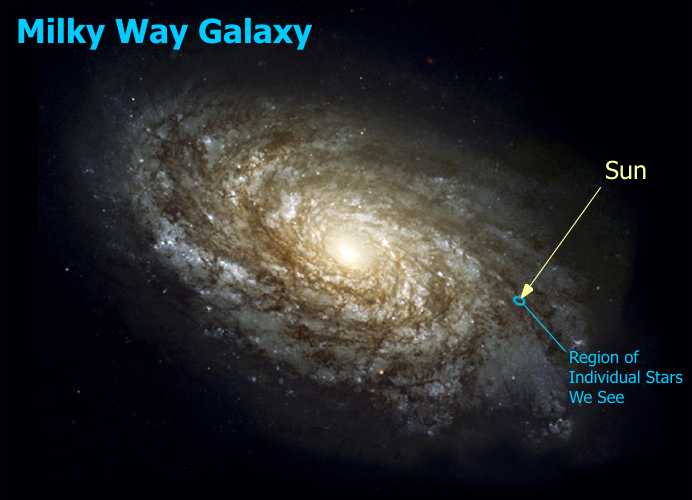
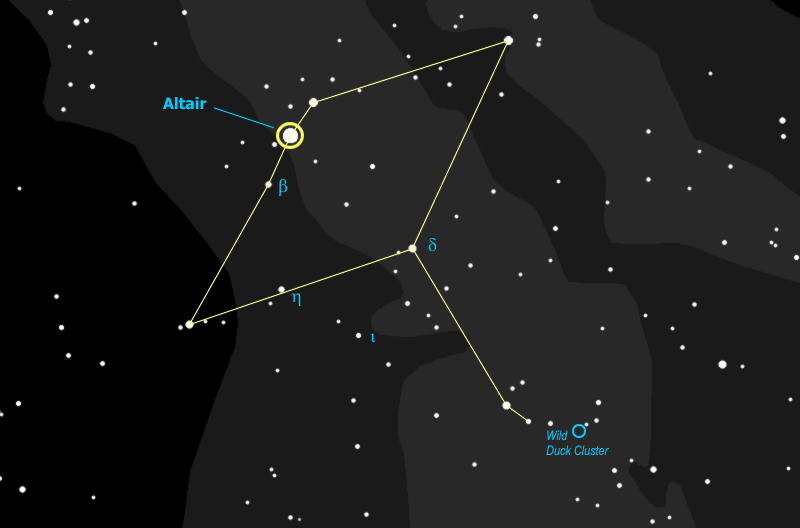
The star that is about halfway between Aquila's eastern wingtip and his body is called h (Eta) Aquilae -- and this is another Cepheid variable with a cycle of about 7 days. At its brightest it's nearly as bright as the body star, d (Delta) Aquilae (actually it's as bright as the eastern Pilot Star b Aquilae), and at its dimmest it's about as bright as i (Iota) Aquilae. This is one of only three Cepheids you can see by eye - you already met d Cephei, the original, and the third one is in the winter constellation of Gemini.
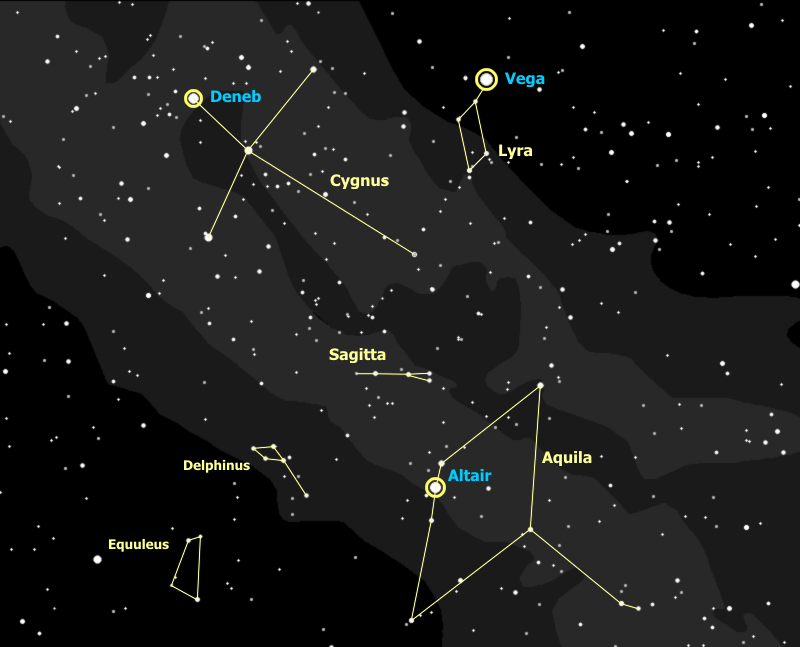
Deneb is the star at the tail of the Swan. Notice that it is about as bright as Altair, which is 16 light years away -- so how far would you guess Deneb is? As it happens... Deneb is 2600 light years away - about 150 times farther!! Deneb is actually 20,000 times brighter than Altair and 200,000 times brighter than our sun. If Deneb were as close as Altair, it would be visible in broad daylight and would cast a shadow at night. This star is one of the greatest super-giant stars known.
Notice in the picture above that Altair and Deneb are two of the three bright stars overhead, which form the "Summer Triangle". You will be introduced to the third (Vega) in just a moment.
Albireo, the star at the head of the swan, is actually a beautiful double star, a yellow giant and a blue main-sequence star. You can just split this star with good binoculars held steady, and it looks better in a telescope.

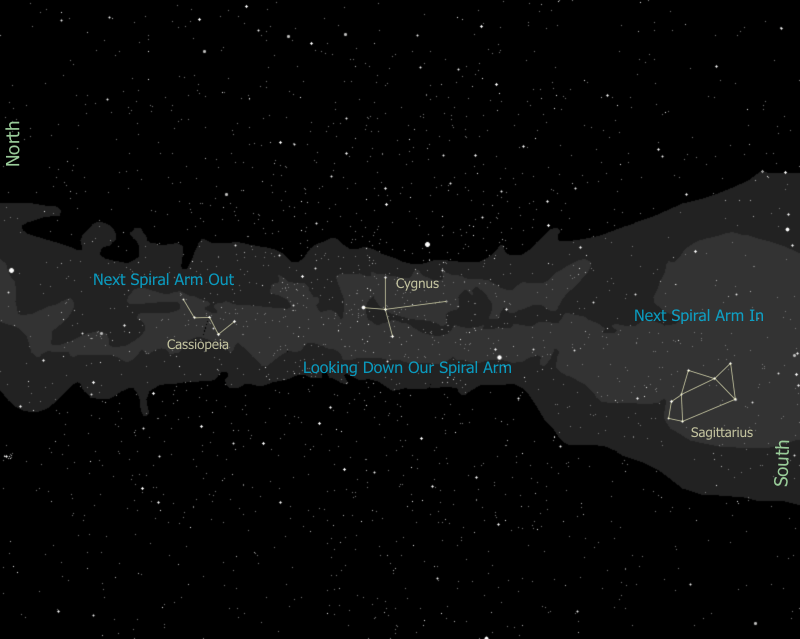
Note that you can see how this all lays out, looking down on the galaxy, in the latest Milky Way diagram to come from NASA, based on new Spitzer Telescope observations.
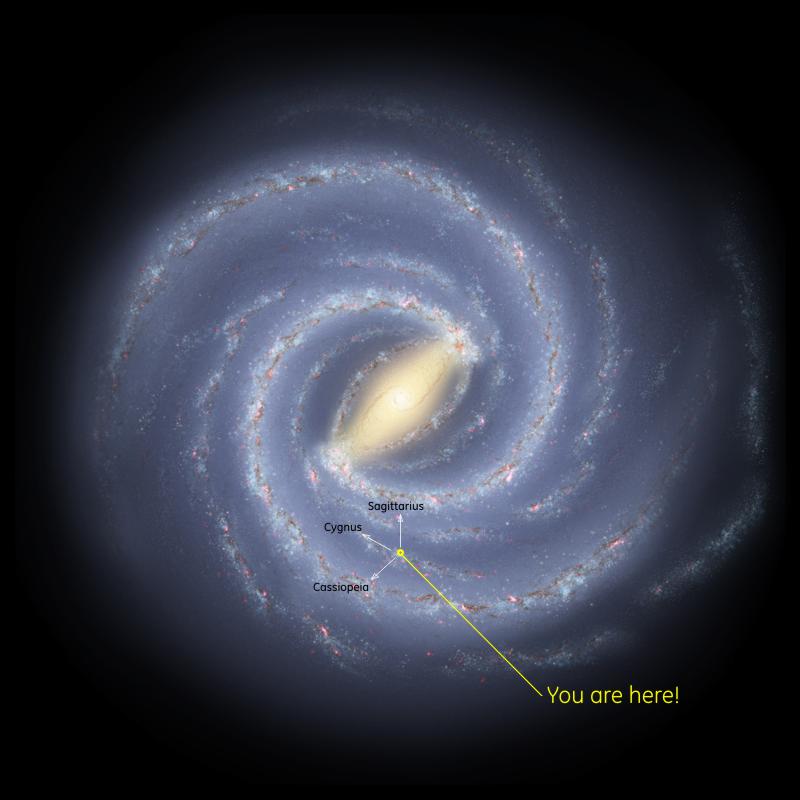
If you locate the two tail-feather stars of Sagitta in binoculars then follow the line between them up (to the northwest), just one field of view, you will see the Coathanger, an interesting cluster of stars.
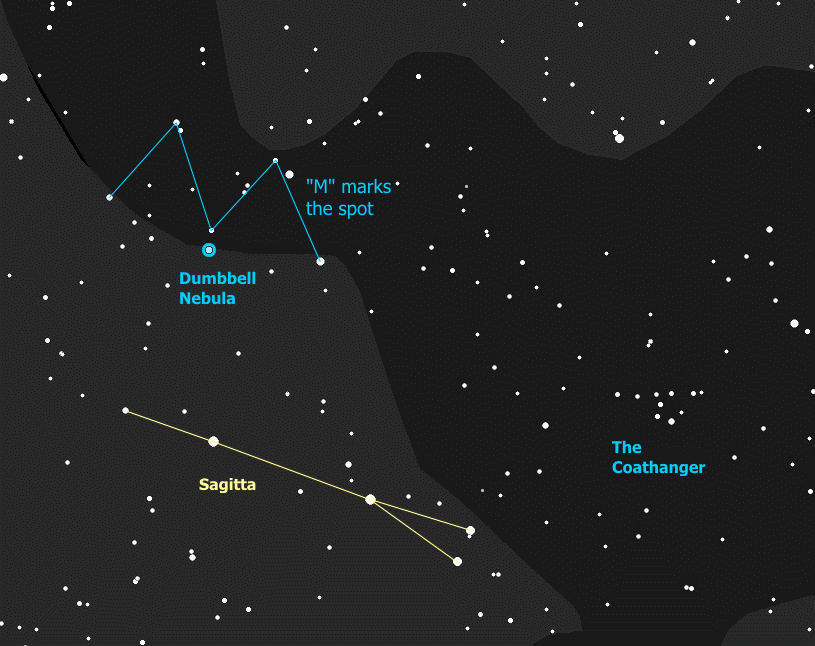
If you are really good with those binoculars you can go up from the tip of the arrow, toward Albireo in Cygnus, and you will find a group of stars that just fill the field of view in the shape of an "M". Right at the central point of the "M" is a faint fuzzy patch that actually is known as the "Dumbbell Nebula". To really see its hourglass shape requires a telescope. This hazy patch once was a star, until it blew itself apart.
This is called a "planetary nebula", because the typical disk shape (this one is less typical) suggested the look of a planet to early astronomers. In fact it has nothing to do with planets at all. This is what's left of a red giant star that finally did what all red giants eventually do. When the fuel at the core runs so low that the nuclear reactions can no longer hold up the weight of the star, it all collapses in to the center, which in turn raises the temperature so high that the star blows off its outer envelope of gases, losing much of its mass. This exposes the core to outer space, or, more accurately, exposes outer space to the core. The intense radiation from the core causes the expanding shell of gas to light up like a neon light, and voila -- the faintly glowing dumbbell that you see here. The white-hot core of this star is now a "white dwarf" -- on some planetaries you can see the star at the center. The Dumbbell's central star is notoriously elusive, though, and we probably can't see it in our telescope.
So diffuse nebulae, like the two we saw in Sagittarius, are the birthplaces of many new stars, and a planetary nebula is the deathbed of a single dying star. We will see another, even more famous, planetary nebula in the next constellation.
 Back to Scorpius
Back to Scorpius
|
 Go to Summer Index
Go to Summer Index
|
 On to Lyra
On to Lyra
|
Your questions and comments regarding this page are welcome.
You can e-mail Randy Culp for inquiries,
suggestions, new ideas or just to chat.
Updated 19 July 2019